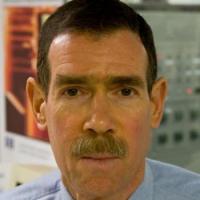SystemX Affiliates: login to view related content.

Several groups are investigating silicon devices to be implanted near the retina for patients with age-related macular degeneration (AMD) and retinitis pigmentosa (RP), in which the photoreceptors degrade while other parts of the retina remain mostly functioning. One class of these devices, subretinal photodiode arrays, aims to replace the degraded photoreceptors and couple to the functioning portions of the eye. Most implementations rely on a power source external to the eye, requiring complex surgical procedures and creating paths for serious infections. In our approach the device operates in the photovoltaic mode, so that the external light provides both the signal and the power source. Each pixel in the two-dimensional array independently converts pulsed infrared light into electrical current that stimulates the retinal neurons.
After a brief discussion of the overall system, this talk will emphasize the design, fabrication, and optoelectronic performance of the photodiode array. To enhance charge injection each pixel contains multiple photodiodes connected in series to provide a photovoltage sufficient to stimulate the neurons, but which is limited by the ionization threshold of the fluid in the eye. An active and a return electrode in each pixel provide localized current flow to improve spatial resolution.
Ted received his degrees from the University of California, Berkeley. He then joined the Research and Development Laboratory of Fairchild Semiconductor, where he worked with epitaxial and polycrystalline silicon before moving to Hewlett-Packard Laboratories, where he worked on numerous semiconductor material and device topics. Before moving to Stanford, he was a Principal Scientist at Hewlett-Packard in the Information and Quantum Systems Laboratory, where he conducted research on advanced nanostructured electronic and sensing materials and devices.
Ted is co-author with R. S. Muller of the textbook "Device Electronics for Integrated Circuits" and is author of the book "Polycrystalline Silicon for Integrated Circuits and Displays." He is a Fellow of the IEEE and a Fellow of the Electrochemical Society. He has taught at the University of California, Berkeley, and at Stanford University and has been an Associate Editor of the IEEE Transactions on Electron Devices. He received the 2016 Distinguished Alumni Award in Electrical Engineering from the Department of Electrical Engineering and Computer Science at the University of California, Berkeley.


